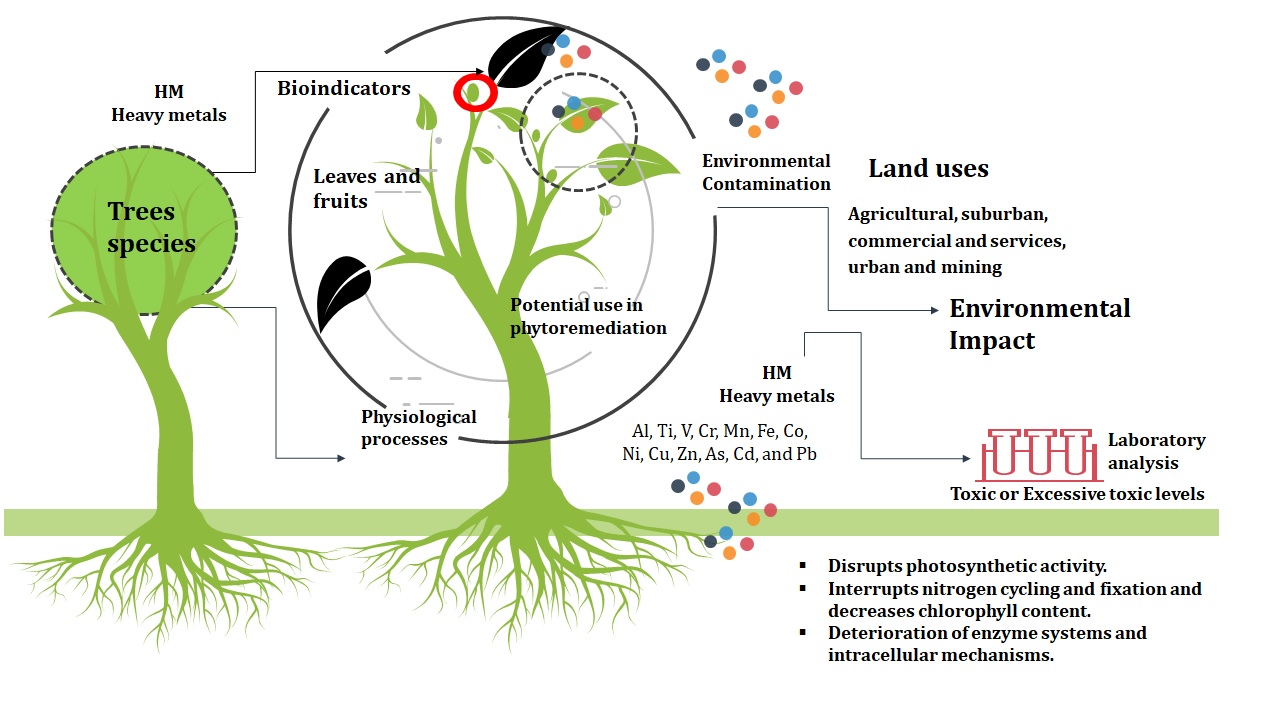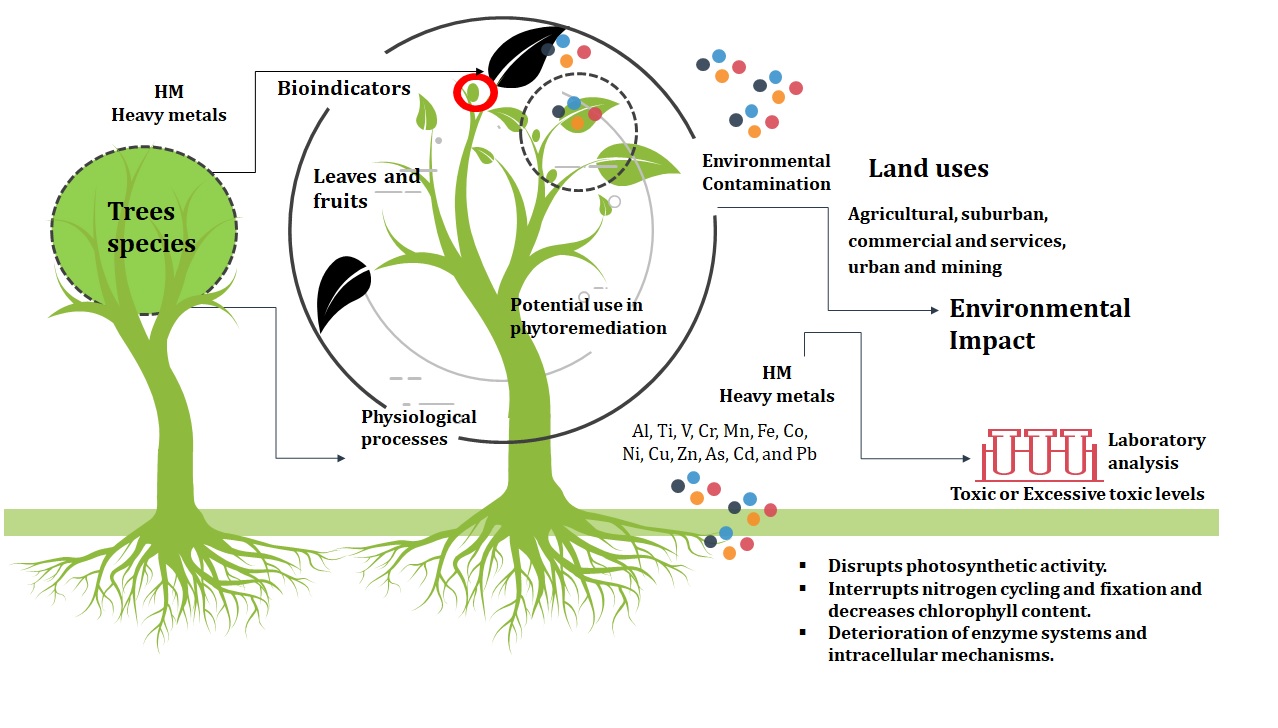Metallic elements in foliar material and fruits of three tree species as bioindicators
DOI:
https://doi.org/10.48162/rev.39.083Palabras clave:
Metales pesados, usos de suelo, fitotóxico.Resumen
 This study aimed to determine the presence of metal elements in fruits and leaves of three tree species as bioindicators in San Luis Potosi, Mexico. Ninety fruit and 90 leaf samples (30 per tree species) were collected at five sites (agricultural, suburban, commercial and services, urban, and mining), using the site and the presence of P. laevigata, S. molle, and A. farnesiana as references. Total concentrations of 13 metal elements were determined using an inductively coupled plasma mass spectrometer (ICP-MS). The species were significantly affected by Co, As, and Pb (ANOVA, p≤0.05). Considering the land use and the species, the contents determined in the leaves and fruits of the three species had sufficient and phytotoxic contents of Al, Cd, Co, Ni, Mn, Ti, and Cr, and excessive ranges with the possible phytotoxic effect of As, Cu, Pb, Zn, V, and Fe. The A. farnesiana had the highest concentrations of 12 heavy metals analyzed (HM). The variation in total metal concentrations between leaves and fruits ranged from 84.70 to 99.06%, with V, As, and Cr being prominent. The functionality of these tree species as phytoremediators and bioindicators is reviewed to evaluate environmental impacts on land use.
This study aimed to determine the presence of metal elements in fruits and leaves of three tree species as bioindicators in San Luis Potosi, Mexico. Ninety fruit and 90 leaf samples (30 per tree species) were collected at five sites (agricultural, suburban, commercial and services, urban, and mining), using the site and the presence of P. laevigata, S. molle, and A. farnesiana as references. Total concentrations of 13 metal elements were determined using an inductively coupled plasma mass spectrometer (ICP-MS). The species were significantly affected by Co, As, and Pb (ANOVA, p≤0.05). Considering the land use and the species, the contents determined in the leaves and fruits of the three species had sufficient and phytotoxic contents of Al, Cd, Co, Ni, Mn, Ti, and Cr, and excessive ranges with the possible phytotoxic effect of As, Cu, Pb, Zn, V, and Fe. The A. farnesiana had the highest concentrations of 12 heavy metals analyzed (HM). The variation in total metal concentrations between leaves and fruits ranged from 84.70 to 99.06%, with V, As, and Cr being prominent. The functionality of these tree species as phytoremediators and bioindicators is reviewed to evaluate environmental impacts on land use.
Highlights
- Tree species represent a potential bioindicator for studying environmental pollutants due to their ability to accumulate heavy metals.
- The variation in total metal concentrations between leaves and fruits ranged from 84.70 to 99.06%
- The contents determined in the leaves and fruits of the three species trees had sufficient and phytotoxic HM contents.
- The tree species have phytoremediators capacity to evaluate environmental impacts and environmental contamination of land use.
Descargas

Descargas
Publicado
Cómo citar
Número
Sección
Licencia
Derechos de autor 2022 Revista de la Facultad de Ciencias Agrarias UNCuyo

Esta obra está bajo una licencia internacional Creative Commons Reconocimiento-NoComercial-CompartirIgual 3.0.
Aquellos autores/as que tengan publicaciones con esta revista, aceptan las Políticas Editoriales.










.jpg)




